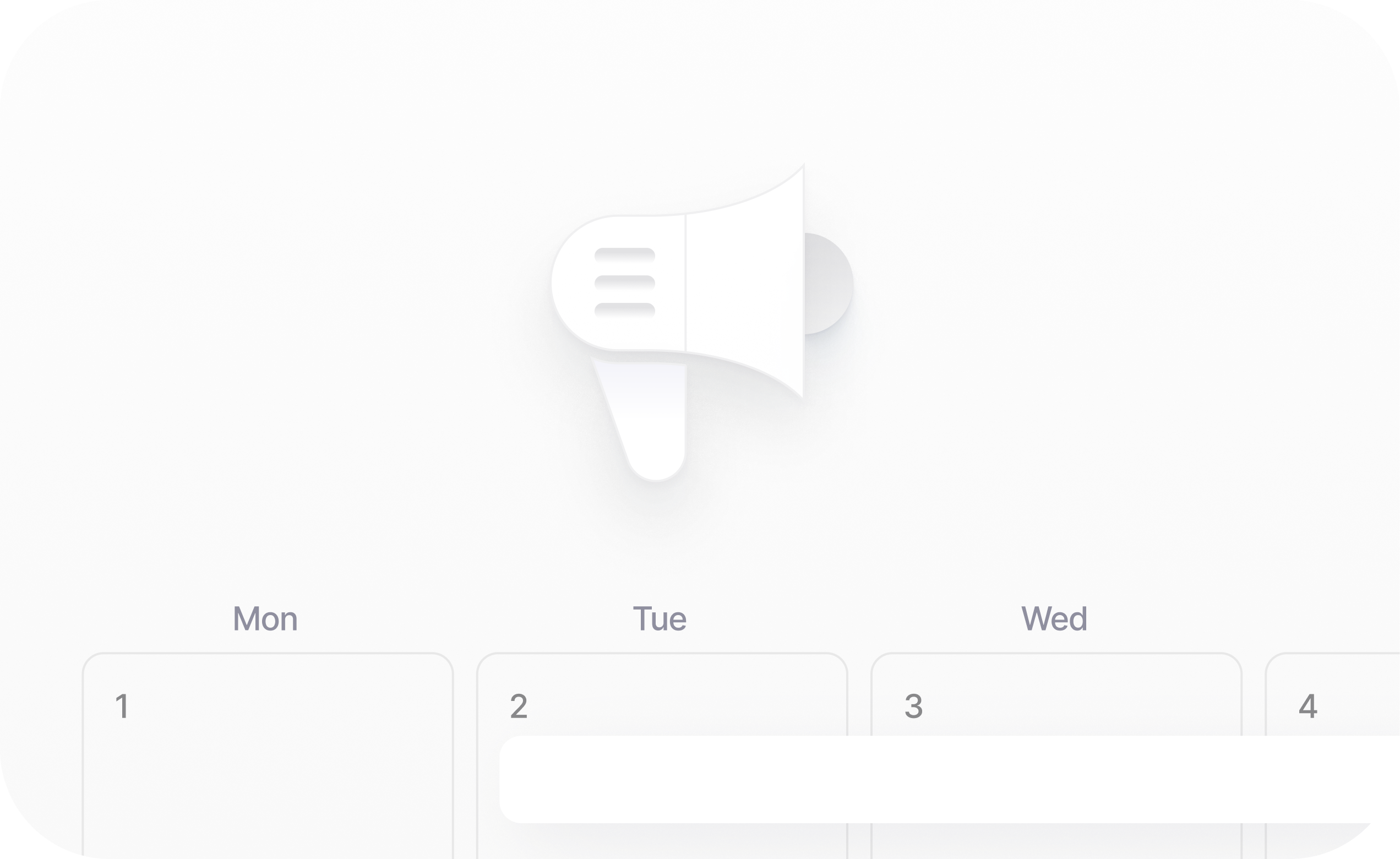Planning Campaigns
How to work with the Campaign Agent to plan your campaign calendar

Campaigns help you organize your marketing efforts around a central theme or goal. A campaign in Quotient is a coordinated group of marketing deliverables that work together toward a common objective. Think of campaigns as the strategic umbrella that organizes your marketing efforts across different channels and timeframes.
Grouping deliverables into campaigns is not a requirement in Quotient; you can still publish one-off blog posts or email broadcasts. But grouping things into campaigns helps ensure that your marketing has a consistent message, making it more effective.
Here are some examples of campaigns:
-
New Feature Announcement: When announcing an important new feature or launching a new product, it's common to write blogs, send email broadcasts, or host webinars promoting the new feature.
-
Events: Campaigns are often built around marketing events. For example, if you are hosting a webinar, or if your company is attending an industry conference, you might want to do a lot of marketing around that event, e.g. sending emails to customers before and after the event.
-
Thought Leadership: A specific topic, such as a new regulation or technological breakthrough, might be trending in your industry. To capitalize on interest, you might want to publish a series of blogs explaining your company's perspective on it.
Core Concepts
Deliverables
Campaigns are composed of a series of marketing deliverables. Deliverables are individual marketing assets that are distributed to your audience. Currently there are 5 types of deliverables in Quotient:
- Blog Posts
- Email Broadcasts
- Marketing Events
- Flows
- Tasks
“Tasks” are a special type of deliverable that represent work that may happen outside of the Quotient platform. Examples of tasks might include:
- Shooting a video
- Taking screenshots of a new feature
- Posting to social media
- Getting legal approval for a blog
Briefs
Briefs are strategic memos that explain the purpose, message, and audience for a campaign. This information is critical for aligning both humans and agents on the strategy of a campaign. Agents read the brief for a campaign when creating content to ensure that the content is consistent with the theme and message of the campaign.
Status
As humans and agents work together on deliverables, they progress through a series of five statuses representing what stage of work they're in:
- Planning
- Draft
- In Review
- Scheduled
- Active
You can read more about this in the Status Lifecycle article.
Owners
The “owner” of a deliverable is the human who's responsible for its creation. When you're the owner of a deliverable, you will get notifications about its progress as agents work on it.
The Campaign Agent
The Campaign Agent can help you develop campaigns from inception to execution. This agent is in charge of creating the campaign - which includes writing the initial brief, outlining the individual deliverables, and picking the right timeframe.
Once you and the Campaign Agent have agreed on the concept for the campaign, the Campaign Agent will delegate work to the other agents. Typically this involves creating a new thread for each deliverable with its respective agent.
Here are some tips for getting the most out of the Campaign Agent:
-
You can ask the Campaign Agent to help you come up with ideas for campaigns, or if you already have a clear idea for a campaign you can use the Campaign Agent to help fill in the blanks and create the content.
-
The Campaign Agent can search the web and perform research, which is helpful for campaigns that have to do with current events or trending topics.
-
Every company runs campaigns differently. Some prefer many small campaigns with only a few deliverables, while others prefer large campaigns with dozens of deliverables over several months. Tell the Campaign Agent about your preferred workflow and ask it to “remember” it in the future.
-
If you’re not happy with a campaign, tell the Campaign Agent what you want to change. The agent will update briefs and add or remove deliverables until it looks right. Building campaigns is an iterative process and requires some back and forth.